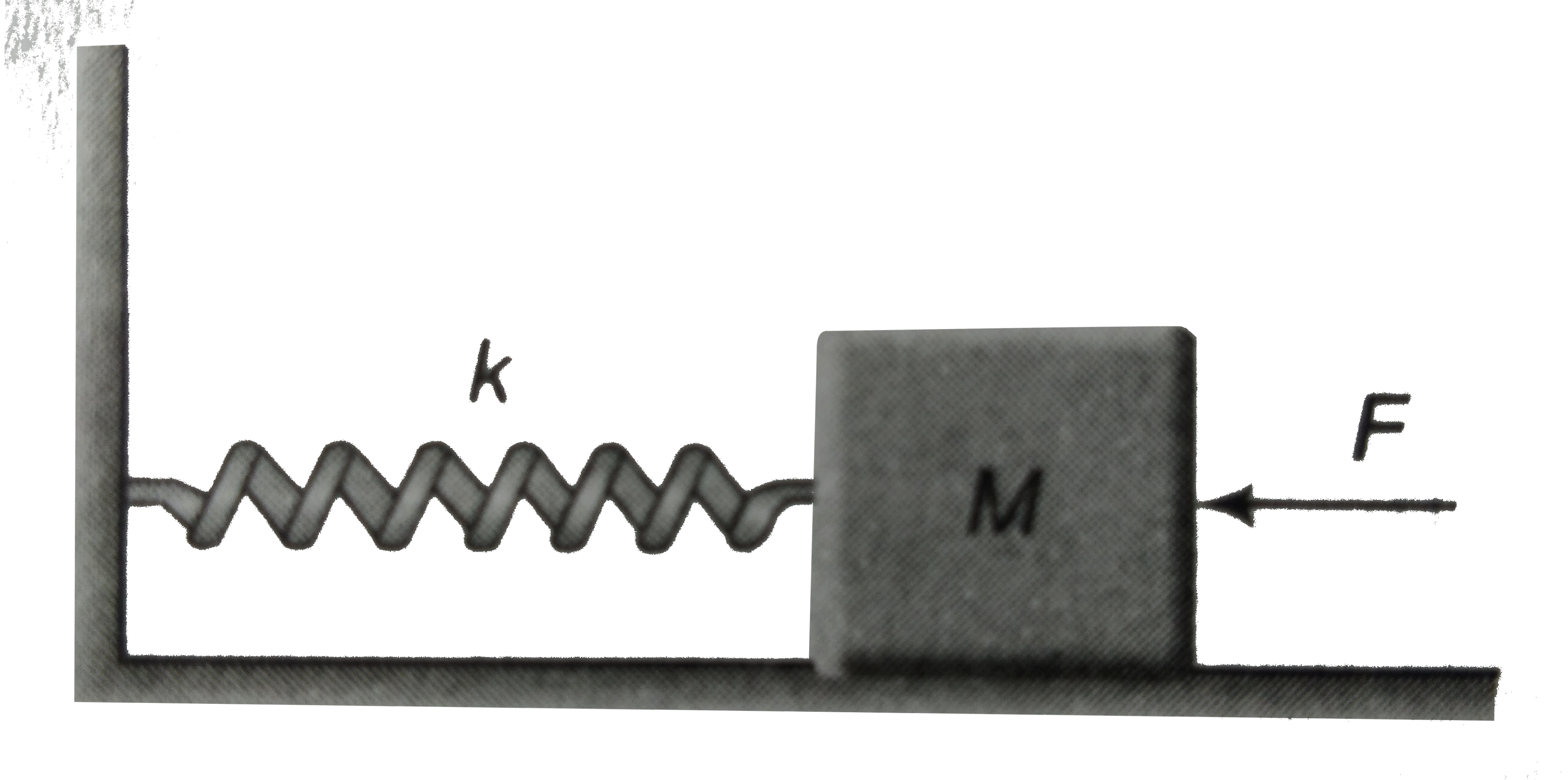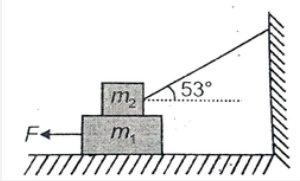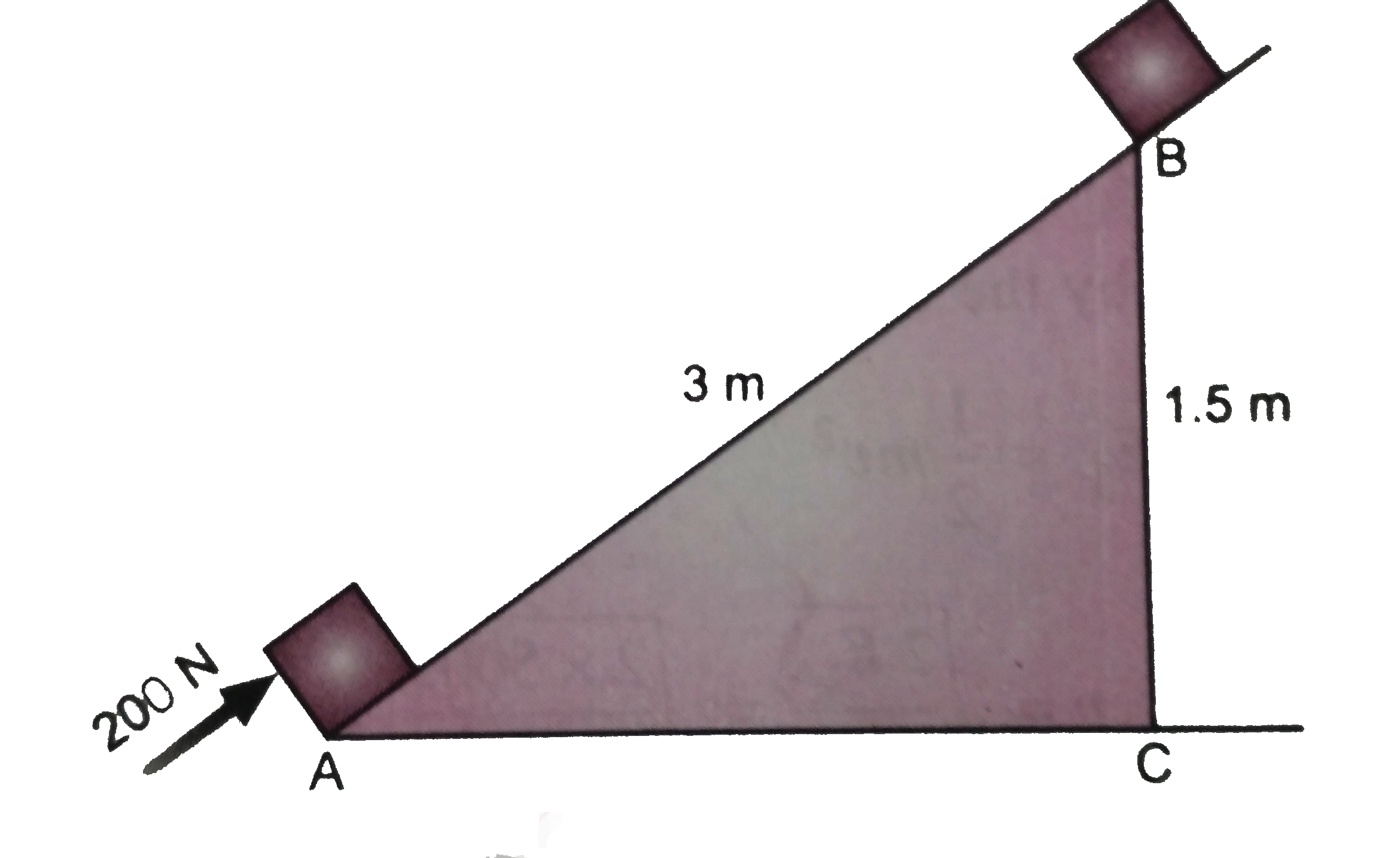Calculate the increase in potential energy as a block of 2kg is lifted through 2m.
The correct Answer is:D
Ep=mgh=(2kg)(10m/s2)(2m)=40J
Topper's Solved these Questions
- WORK AND ENERGYBOOK - PRADEEPCHAPTER - WORK AND ENERGYEXERCISE - Continuous Assessment
24 Videos
- WORK AND ENERGYBOOK - PRADEEPCHAPTER - WORK AND ENERGYEXERCISE - Assessment Through paper pen Test
30 Videos
- WORK AND ENERGYBOOK - PRADEEPCHAPTER - WORK AND ENERGYEXERCISE - Multiple choice Questions
9 Videos
- SOUNDBOOK - PRADEEPCHAPTER - SOUNDEXERCISE - Model Test (sec - B)
12 Videos
Similar Questions
Calcualte the increase in mass when a body of rest mass 1 kg is lifted up through 1 m near the earth's surface.
View SolutionA wire of length 3m and stretched by hanging a weitght of 2kg from it and the elongtion is 2mm. Calculate the Yong's modulus and the strain potential energy of the wire.
View SolutionA horizontal force of magnitude 41.0 N pushes a block of mass 4.00 kg across a floor where the coefficient of kinetic friction is 0.600. (a) How much work is done by that applied force on the block-floor system when the block slides through a displacement of 2.00 m across the floor ? (b) During that displacement, the thermal energy of the block increases by 40.0 J. What is the increase in thermal energy of the floor ? (c) What is the increase in the kinetic energy of the block ?
View SolutionCalculate the resultant gravitational potential in terms of G (universal gravitational constant) if infinite number of masses of 2kg each are placed along the X-axis at x=±1m,±2m,±4m,±8m,…
View SolutionA 1.0 kg block is initially at rest on a horizontal frictionless surface when a horizontal force along an x axis is applied to the block. The force is given by →F(x)=(2.5−x2)ˆiN, where x is in meters and the initial position of the block is x=0. (a) What is the kinetic energy of the block as it passes through x=2.0m ? (b) What is the maximum kinetic energy of the block between x=0 and x=2.0m ?
View SolutionIn figure, k=100N/m,M=1kg and F=10N

(a) Find the compression of the spring in the equilibrium position
(b) A sharp blow by some external agent imparts a speed of 2m/s to the block towards left. Find the sum of the potential energy of the spring and the kinetic energy of the block at this instant.
(c) Find the time period of the resulting simple harmonic motion.
(d) Find the amplitude.
(e) Write the potential energy of the spring when the block is at the left estreme.
(f) Write the potential energy of the spring when the block is at the right extreme.
The answers of (b), (e) and (f) are different. Explain why this does not violate the principle of conservation of energy ?
View SolutionIn figure calculate the linear acceleration of the blocks.
Mass of block B=8kg
mass of disc shaped pulley =2kg (take g=10m/s2)

View SolutionCalculate the Force (F) required to cause the block of mass m1=20kg just to slide under the block of mass m2=10kg [ coefficient of friction μ=0⋅25 for all surfaces ]

View SolutionA block of mass 30 kg is pulled up by a rope as shown in Fig. with a constant speed by applying a force of 200 N parallel to the slope. A and B are initial and the final positions of the block. Calculate:
(a) the work done by the force in moving the block A to B,
(b) the potential energy gained by the block,
(c) account for the difference in work done the force and the increase in potential energy of the block.

View SolutionA block of mass 1kg is pushed up a surface inclined to horizontal at an angle of 30∘ by a force of 10N parallel to the inclined surface [figure]. The coefficient of friction between block and the incline is 0.1. If the block is pushed up by 10 m along the incline, calculate
(a) work done against gravity
(b) work done against force of friction
(c) increase in potential energy
(d) increase in kinetic energy
(e) work done by applied force.

View Solution
